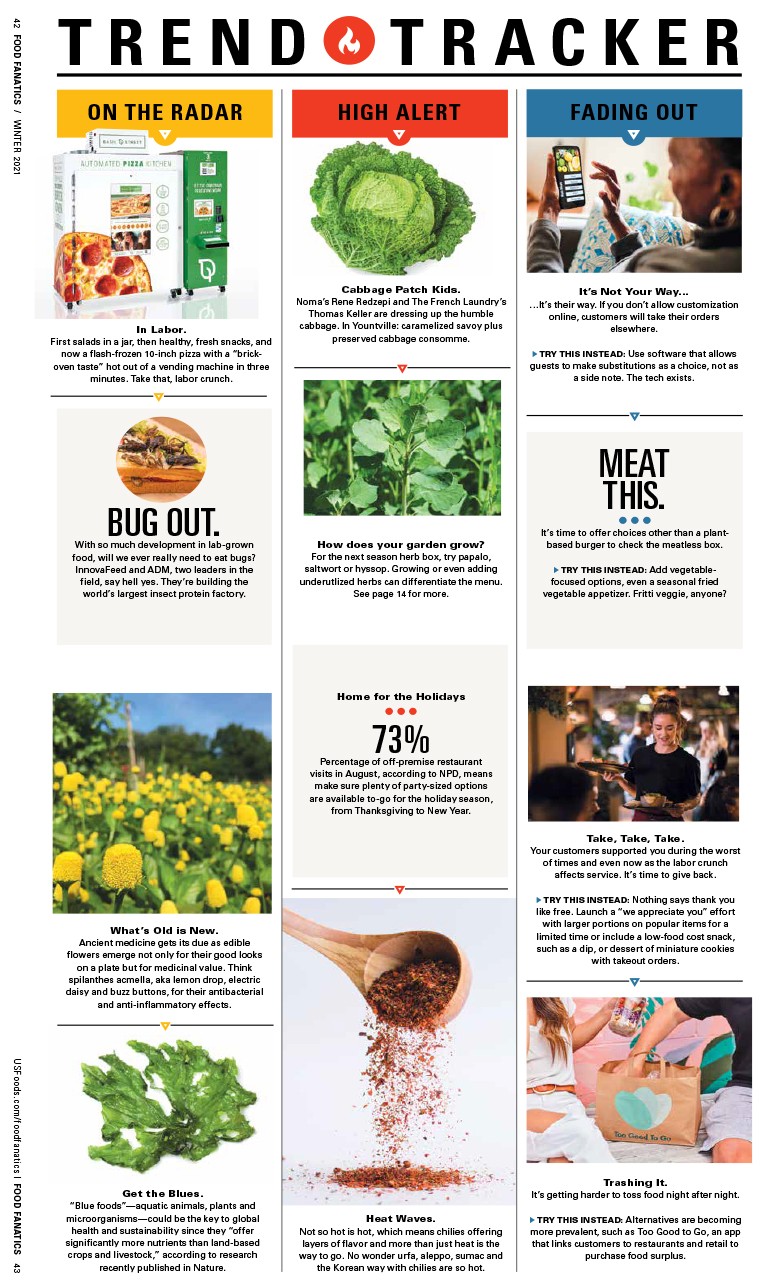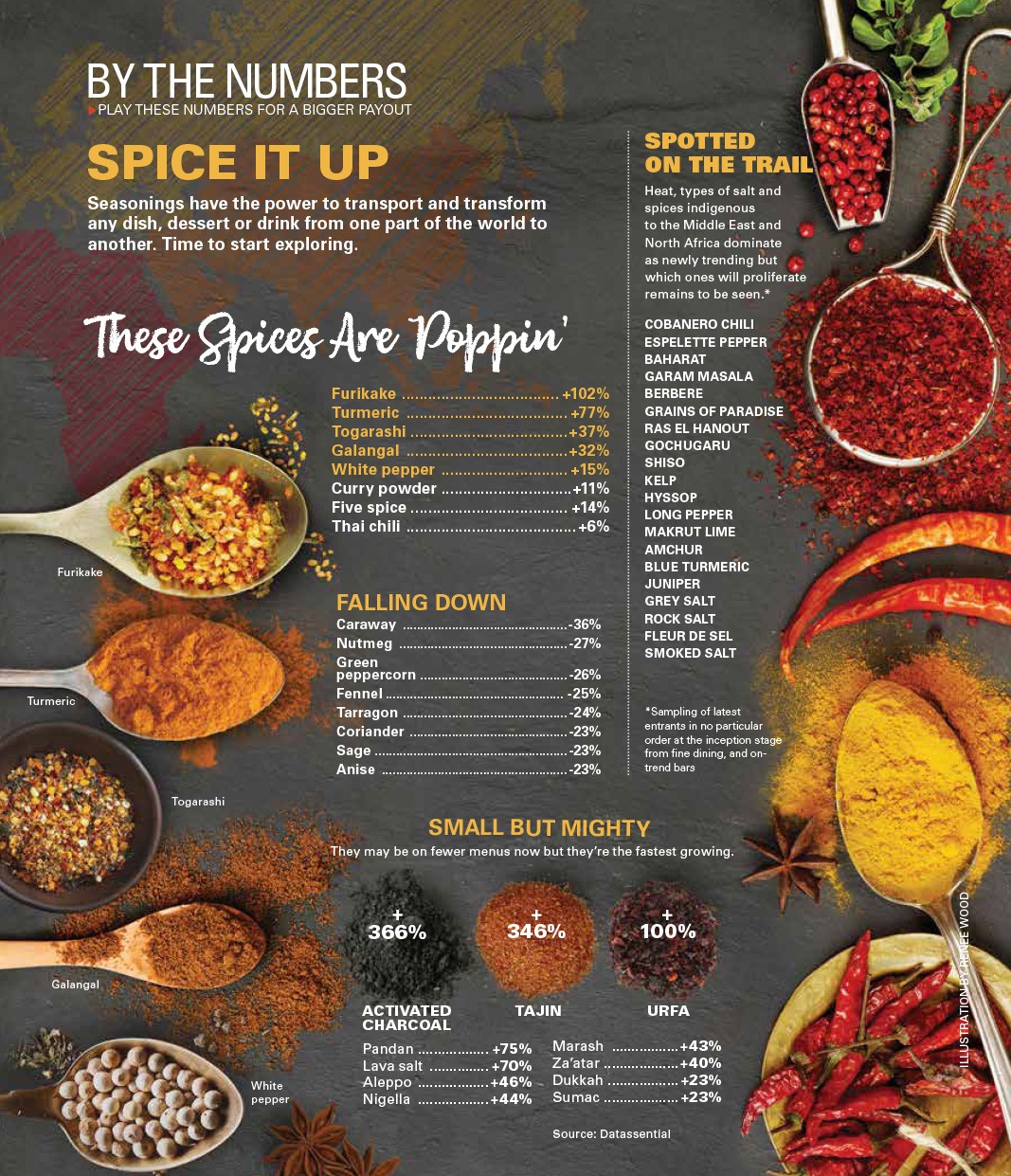Online Delivery Divide
Whether you join the big guys or go DIY, online delivery is a necessity for most restaurants.
Online food delivery is a blessing for diners, who are increasingly turning to the web and apps for takeout orders. Restaurants, however, have more complicated decisions when it comes to online offerings—namely whether to go with a food delivery aggregator (such as GrubHub Seamless or Eat24) or create their own online ordering platform.
Fifty-nine percent of frequent customers say they would use the option to order online if available, according to a 2012 National Restaurant Association survey. And 52 percent of those surveyed said they had actually ordered food online in the past. It’s a market segment that’s poised for growth, particularly with the 25,000 restaurants captured by the recent merger between mega-aggregators GrubHub and Seamless. So which online ordering path should restaurant owners follow?
JOINING THE BIG GUYS
PROS
New Customers: Diners are waiting to find a new favorite, just as restaurants are waiting to be discovered. Sites like GrubHub Seamless present diners with dozens of choices.
Tech support: Site down? Not to worry. The big aggregators handle all the behind-the-scenes tech support. (Though smaller companies that create restaurant websites also offer similar perks.)
Marketing muscle: Aggregators have cash for splashy advertising and social media engagement the four-seat Thai restaurant on the corner could only dream of.
CONS
Steep fees per order: Most aggregators get paid when a restaurant receives an order through their site or mobile app, starting at about 10 percent per order. GrubHub Seamless also offers the option for restaurants to pay a higher percentage in return for premium placement/increased visibility on the platforms and to change that percentage any time (say, on a Sunday afternoon during a big football game).
Little control over ordering experience: Restaurants that earn most of their revenue from delivery will likely want to host their own online ordering, Restaurant consultant James Sinclair of OnSite Consulting says. “If you order from GrubHub and there’s a problem, who do you ring? Who owns the customer?” he says.
Lost retention: With an aggregator, there’s no way to differentiate between old customers and new ones, which means you might lose a small fee from an existing customer who might have ordered from you anyway.
GOING SOLO
PROS
Infinitely customizable: Create the site you want, tailored to your customers and cuisine. Domino’s, for example, has been riding the e-commerce train for five years, customizing its site with a pizza tracker, pizza builder and a profile platform that allows customers to keep track of their favorite orders.
Menu opener: Designing your own site exposes customers to more of your menu, allowing you to craft a platform to steer them beyond restaurant favorites and to upsell other items.
Fast, easy updates: Instant, last minute tweaks to your own site, such as adding specials or updating prices are possible.
CONS
ROI uncertainty: Online ordering remains a small piece of the delivery pie. Smaller restaurants that invest too much time and money in a site might be disappointed with the return on investment if the majority of delivery sales still come from phone calls.
Another to-do: Along with all the other duties of running a restaurant, smaller operations may decide they just don’t have the time to support an online venture.
Costly investment: Big innovation takes big resources. A company like Domino’s can support a growing information technology department while bells and whistles pose a major expense for a small mom-and-pop operations.
BOTTOM LINE
The best online-delivery model depends largely on the restaurant. High-volume chains will likely want to craft their own sites. Small mom-and-pops will appreciate the ease of aggregators and their ability to tap new customers.
Heather Lalley is a Chicago-based freelance writer with a culinary school degree.



